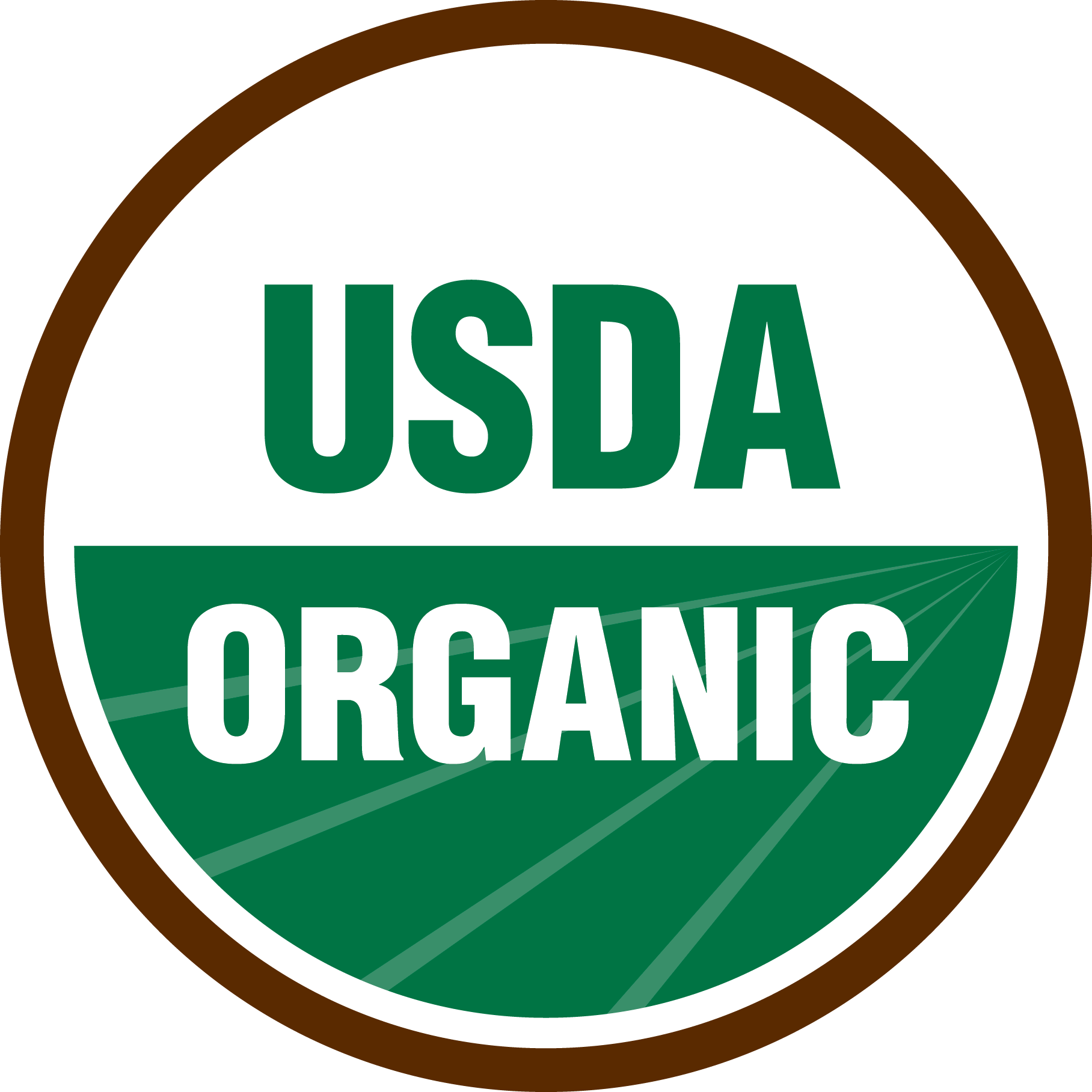Is Organic Certification important for Hemp products?
Before the establishment of the National Organic Program (NOP), the term “organic” was essentially meaningless. There was no universally accepted definition, and no regulation of the terms’ use. The term “organic” was used with reckless abandon until the National Organic Program (NOP) standards were adopted by the USDA in October of 2002. It was not unlike the current use of the term “full spectrum” in the hemp industry (but more on this later).
Broadly speaking, there are three regulated categories of “organic” in labelling manufactured products:
- “100% Organic” - 100% of ingredients are certified 100% organic, excluding salt and water. These products must bear the USDA Organic logo, and list the certifying agency.
- “Certified Organic” or “Organic”- At least 95% of ingredients (by weight) are certified organic, excluding salt and water. Non-Organic ingredients must meet certain requirements (such as lack of availability). These products must bear the USDA Organic logo, and list the certifying agency.
- “Made with Organic Ingredients” - At least 70% of ingredients are certified organic, excluding salt and water. These products may NOT bear the USDA Organic logo
The use of these terms requires that the manufacturer undergoes a series of annual facility inspections, annual audits, meets NOP record keeping requirements, and has their processes, packaging, and labels approved by a third party certifying agency. Very small (cottage industry) manufacturers are exempt from the inspections and certification process, but still must comply with all regulations.
Additionally, in order to receive an “Organic” designation on a Hemp product, the active ingredient must be certified organic. This is important…
Manufacturers who do not use the above three terms may still legally:
- List specific ingredients as “organic” only in their ingredient list (provided the ingredients are certified organic). Ingredients may not be listed as “certified organic”.
- Call their product “natural” (a fairly meaningless term)
What does USDA Organic mean for Hemp products?
It isn’t exactly news that the Hemp industry lacks regulation. Everyone has seen investigative reports showing products that are mislabelled and contain little to no active ingredients.
While the Farm Bill of 2018 legalized hemp products federally, effective regulation has been slow to materialize. The USDA, FDA, and DEA have all been sending very mixed and often contradictory messages regarding the regulation of hemp products. What regulation has been set forth hasn't been widely enforced or in some cases is virtually un-enforceable. In this regulatory vacuum states have created their own regulations and the “wild west” mentality has persisted in many companies.
Lack of regulation in the Hemp industry makes USDA Organic certification critical for consumers.
The presence of a USDA Organic logo on a Hemp product may be the most important thing to look for, other than a clean certificate of analysis (COA).

Purchasing a product bearing the USDA Organic logo assures you that:
- Organic ingredients are actually used in every batch of “Organic” labelled product
- Products are made with clean extracts that were made with Organic Ethanol, Carbon Dioxide, or other non-toxic means.
- Organic ingredients are from licensed, inspected sources that maintain USDA standards. This is especially important for imported ingredients.
- The active ingredients are Organic, not just the carrier oils and fillers.
- Non-GMO ingredients were used.
- Toxic chemicals are not used as processing aids.
- The manufacturer has been rigorously inspected to ensure that they have the systems and procedures in place to protect you. This includes:
- Appropriate use of safe cleaning agents
- Cleaning and production logs
- Non-toxic pest control
- Documentation that packaging has not been treated with harmful fumigants
- Production is tracking to ensure a rapid recall if necessary.
- Systems to assure that Organic materials are not contaminated with non-organic
Hemp manufacturers enrolled in the NOP have not only chosen to use the highest quality ingredients, they have taken a voluntary step towards regulation. They have invested time and money into raising the bar. They have placed your health first by inviting regulatory oversight into every aspect of their business because it is the right thing to do.
What should you look for in Organic Hemp products?
- Look for the green USDA Organic Logo. Keep in mind that having the logo on the manufacturers website, doesn’t necessarily mean that every product they make or sell is Certified USDA Organic.

- Look at the packaging. Does it say “100% Organic” or “Organic” but not have the USDA Organic Logo and list the certifying agency? Certified products must bear the USDA Organic logo, and list the certifying agency. Are the active ingredients organic? Or just the carrier oils? The packaging shown at right claims it is “100% Organic” but contains non-organic extract. It also does not bear a USDA logo, and lists an ingredient as USDA Certified. All of these are NOP violations.

- Verify the Certification. Anyone can cut and paste a logo. The USDA Organic Integrity Database is a good place to start. Verify that the manufacturer actually has certified the products labeled as certified.


Share:
How do I give hemp products to my pet? How much should I give my pet?
Study: 74% of Americans Now Use Hemp Products